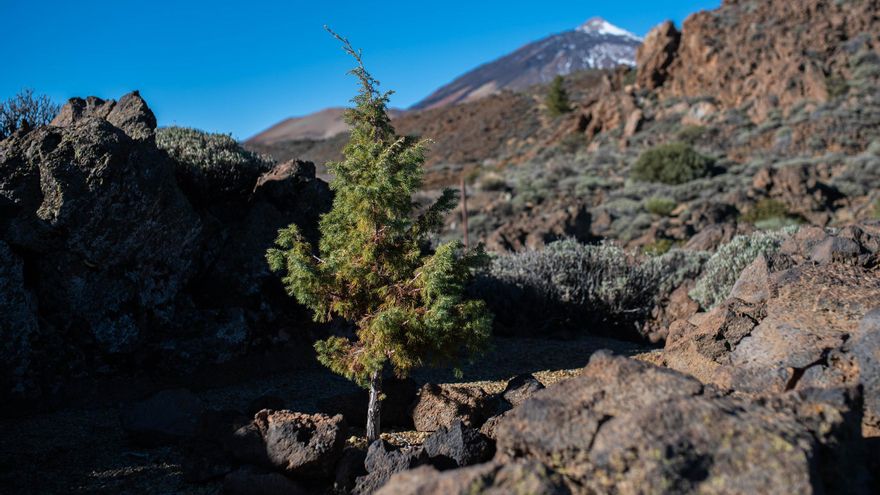
It’s not the famous dragon tree of Icod, but there is also a botanical relic living in Tenerife that currently leads the age of the dated trees in Europe.
Its history, made from rock, wind, and time, is, above all, an argument in favour of conservation for a forest that was on the brink of disappearing and is now slowly taking root again.
Recent Dating
The oldest living tree scientifically dated in Europe is not a dragon tree, nor is it in Greece or Italy: it is a Canary cedar (Juniperus cedrus) that survives firmly clinging to the cliffs of the Teide National Park.
Its minimum age, established through radiocarbon dating, is 1,481 years, according to a study published in Ecology.
This is a Juniperus cedrus, an endemic species of the Canary Islands and Madeira listed as Endangered by the IUCN due to its reduced area of occupation and very small populations, now sheltered in inaccessible cliffs after centuries of logging and grazing.
That exact geography (lava cliffs, scarce soil, cold and arid summit climate) explains its survival: where humans could not reach, the cedars persisted.
The authors of the study emphasise that they reached the specimens using climbing techniques, as many of these populations are only accessible this way.
How We Know It’s 1,481 Years Old
The scientific team dated the specimens using radiocarbon (C-14), confirming several millenary trees and one with at least 1,481 years.
With that figure, the Tenerife cedar comfortably surpasses “Italus,” a pine from Italy dated at 1,230 years—and “Adonis” in Greece (1,075), previous holders of the European “title”.
The scientific research did not name the tree, but subsequent communications and press have popularised the nickname “The Tree” to refer to the oldest cedar of Teide.
In any case, its exact location is not disclosed for conservation reasons and access to those cliffs is restricted. They are technical work zones for authorised teams.
“The Patriarch” is Not the Same
In 2019, the park identified an ancient cedar, known as “The Patriarch”, as the oldest visible tree in the protected space (around +1,100 years).
The 2022 study demonstrated that there are even older specimens on the cliffs, including the 1,481-year-old one. This means that “The Patriarch” and the oldest cedar in Europe are not the same individual.
Beyond the record, this discovery reconfigures the European map of old trees and reinforces the value of Teide as a refuge for plant longevity.
Scientists remind us that these cedars have survived eruptions, rockfalls, and droughts for centuries, and yet they are helping to recolonise the plains thanks to bird dispersion.
As of this year, the Tenerife Cabildo, the University of Valladolid, and the Endesa Foundation are developing a prospecting project for old cedars hanging on cliffs and a population reinforcement program for the Juniperus habitat in the park (including the planting of thousands of new specimens and the propagation of local plants).
If anything, this veteran teaches us that, against time, only well-cared-for ecosystems endure.
















